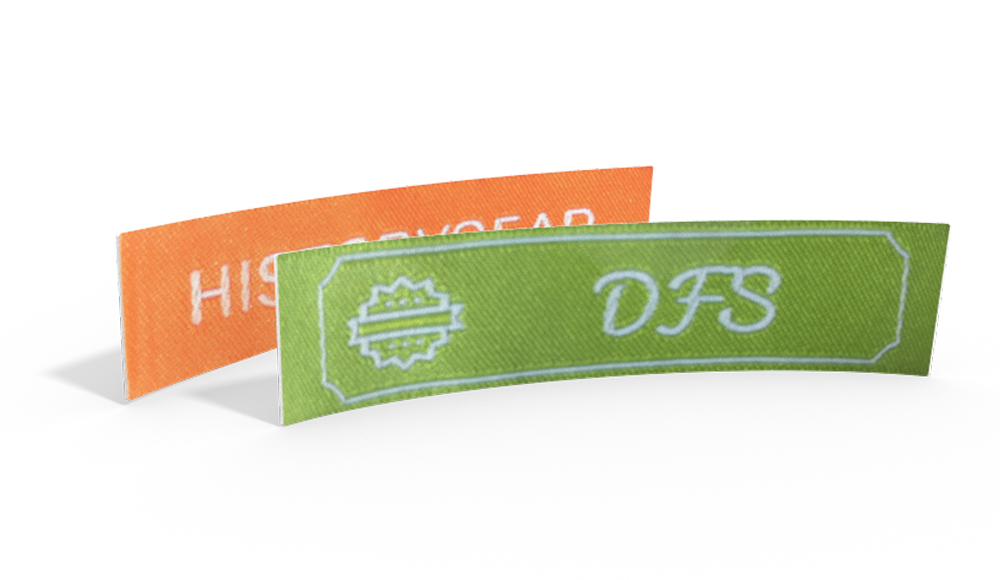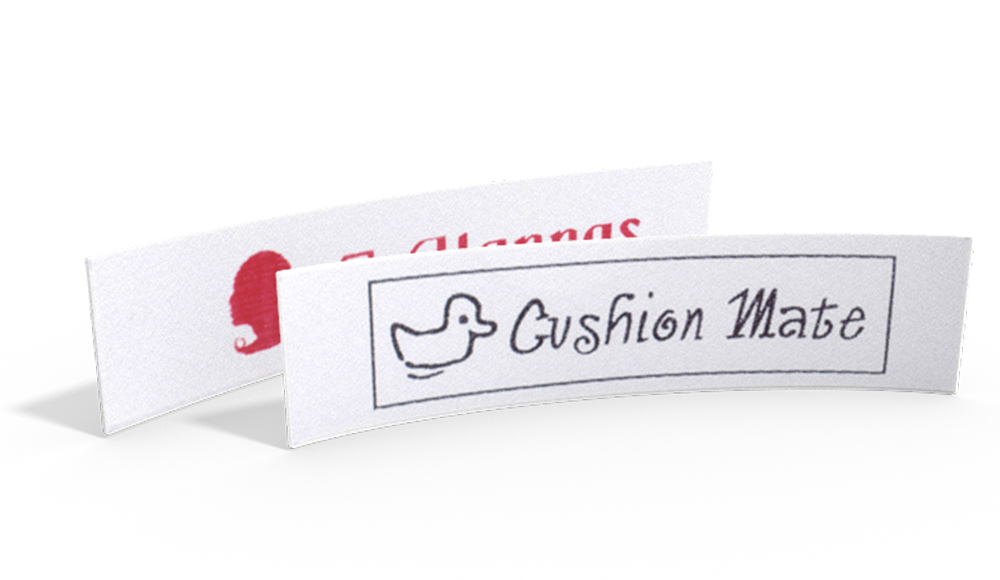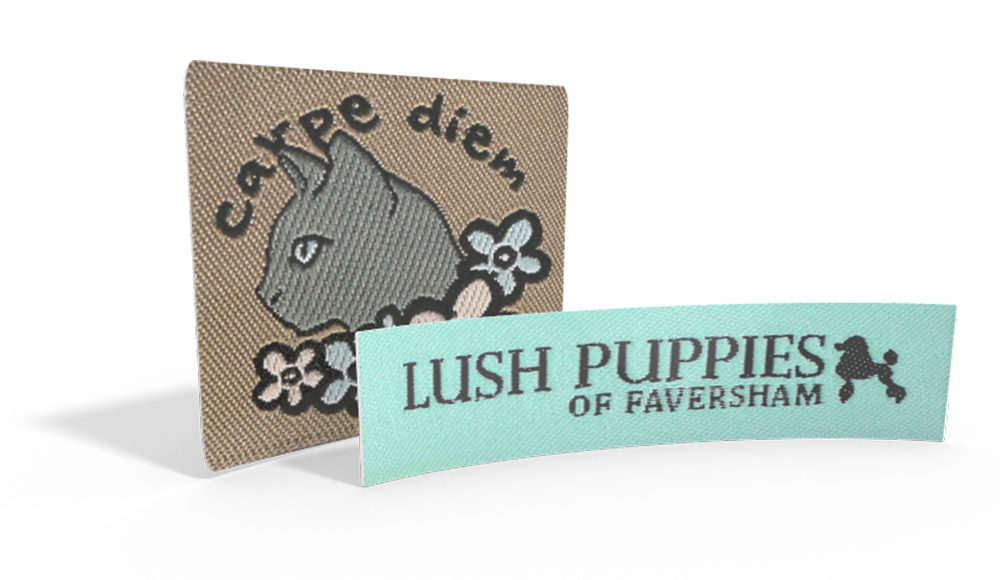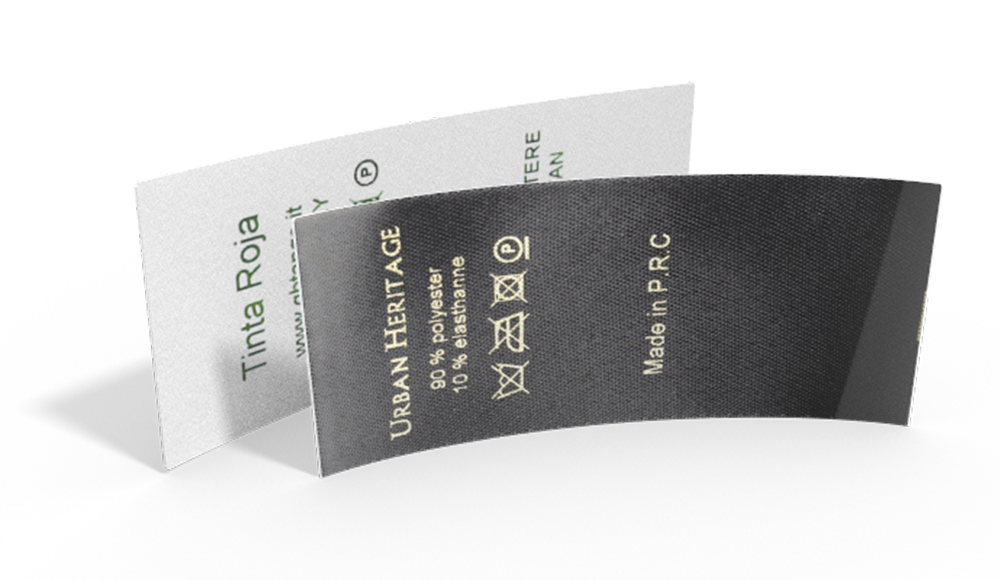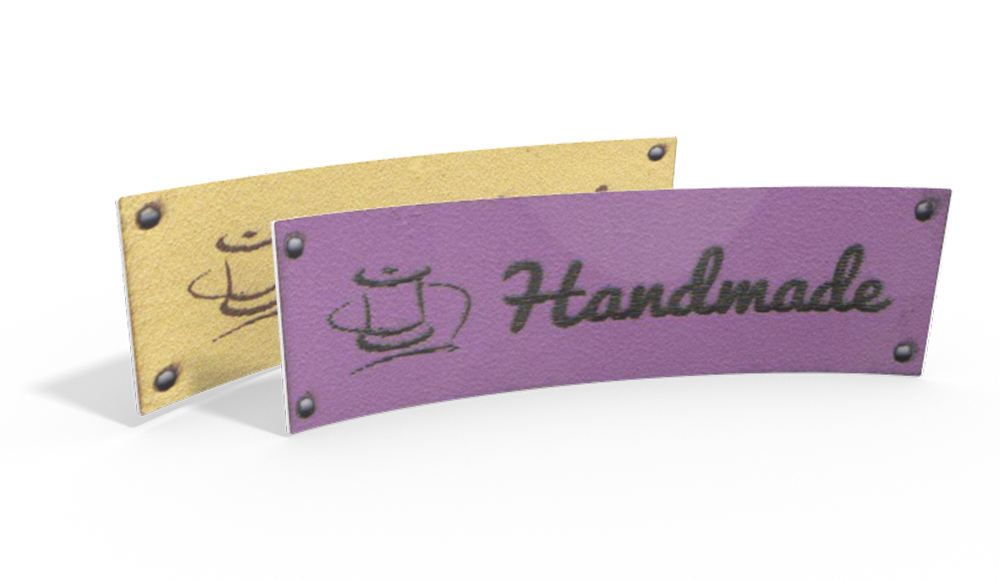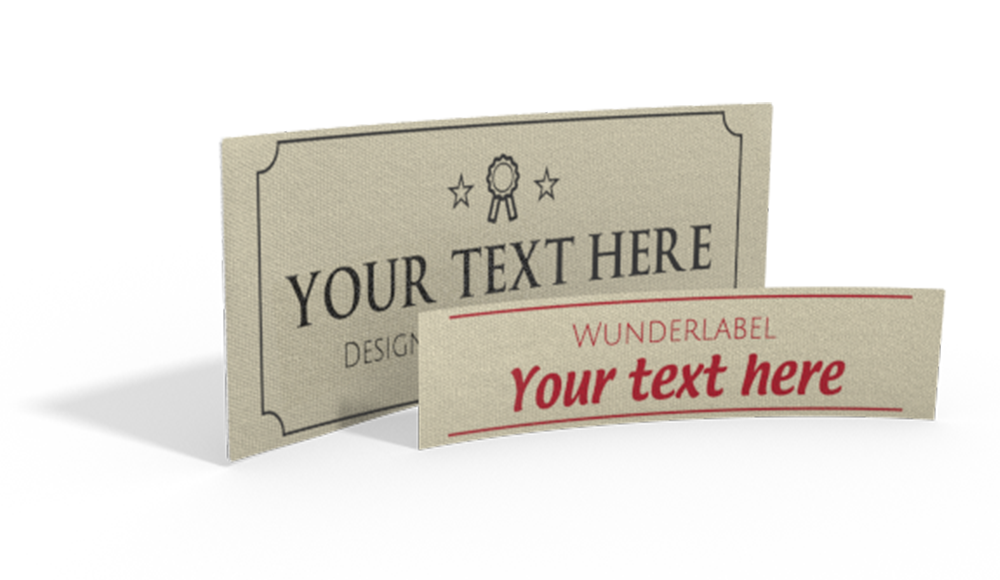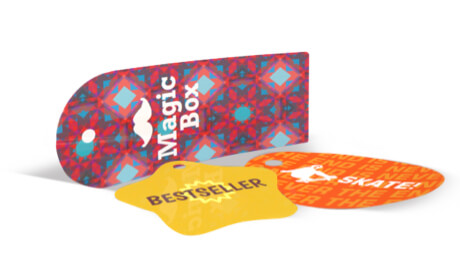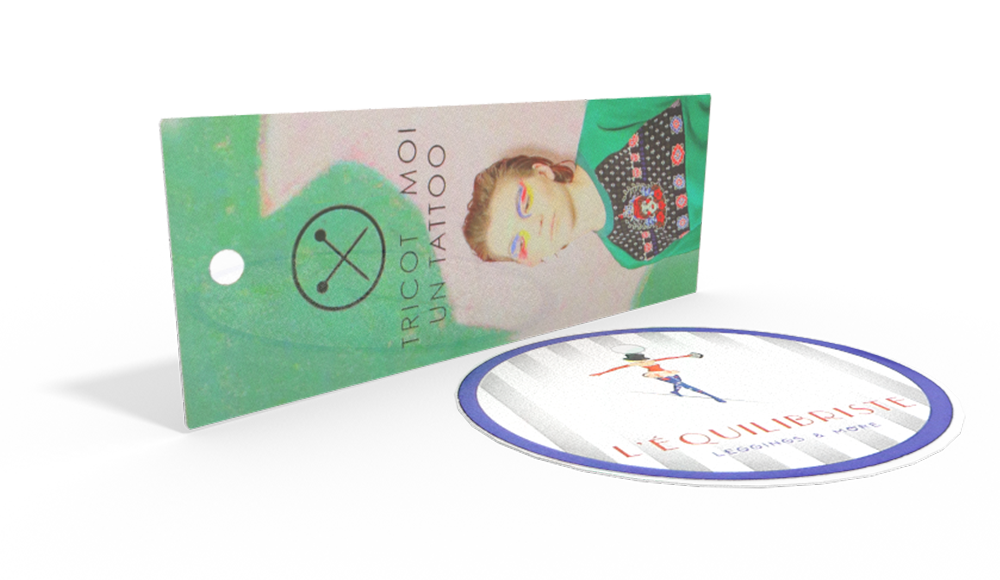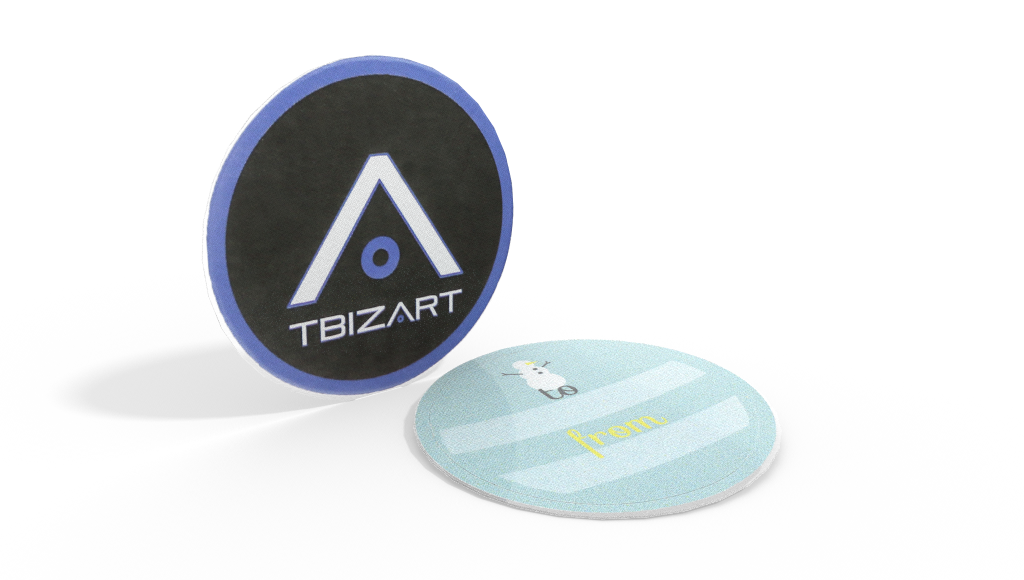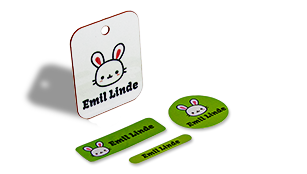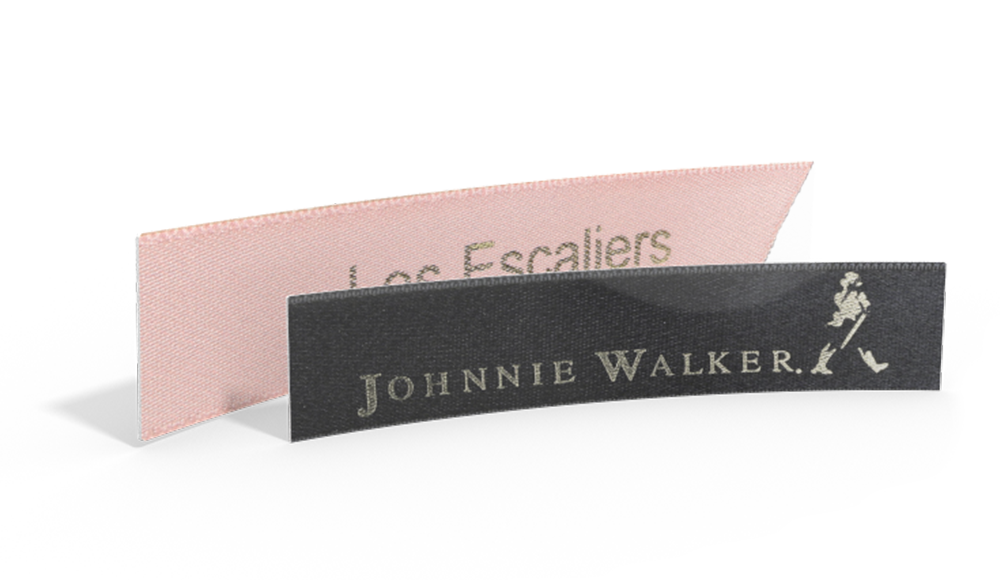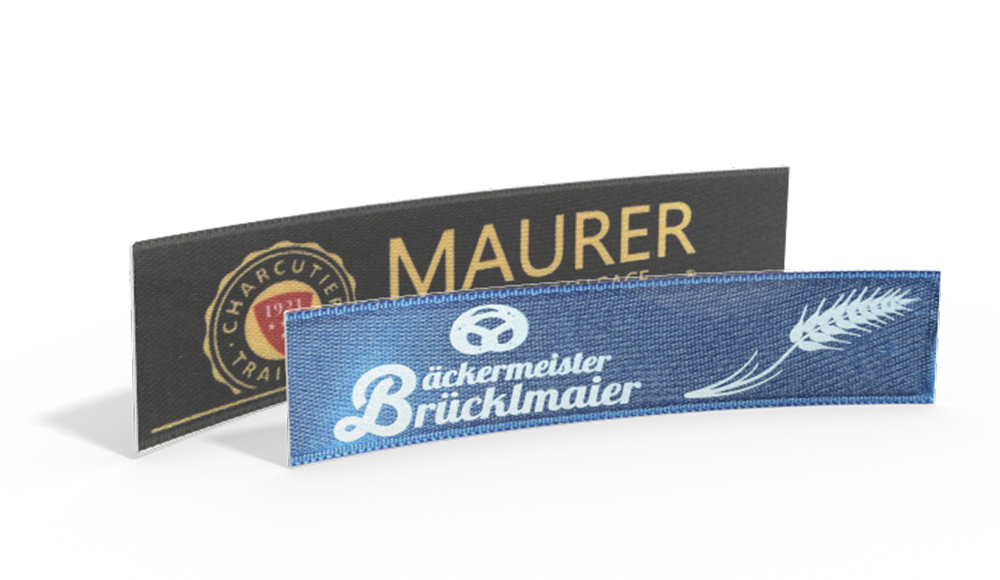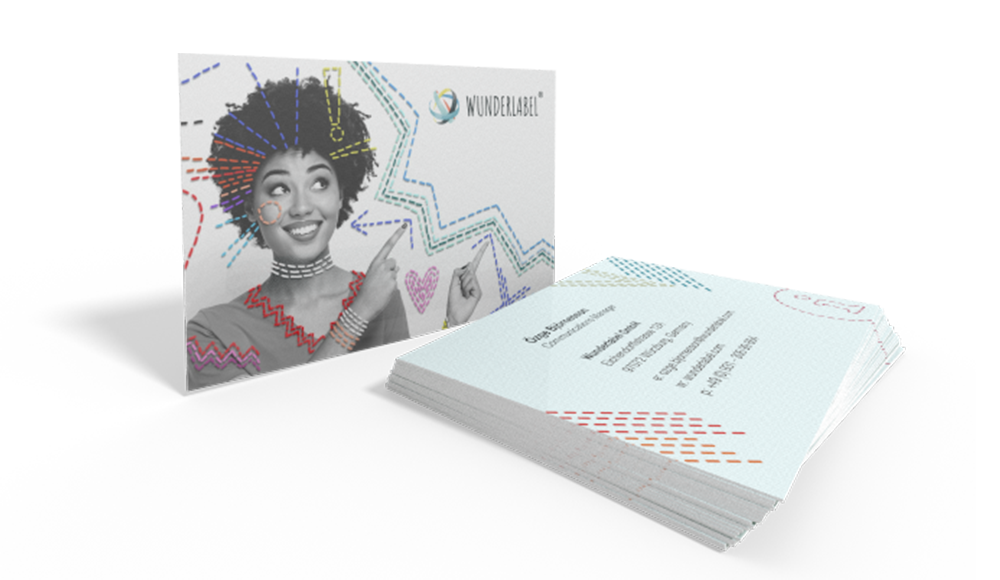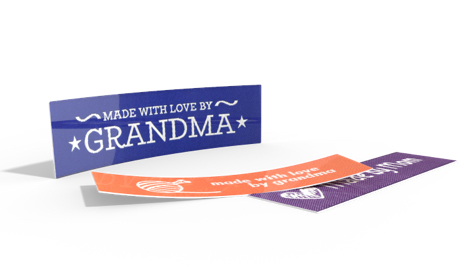Taffeta or taffeta fabric is a fabric made from cotton, silk or synthetic fibers such as polyester. It is known for its shiny and stiff surface as well as its strength and durability.
Taffeta is often used to make dresses, skirts, jackets, ties, costumes and wedding gowns. It is also frequently used as a lining fabric for other garments because it is lightweight and has a smooth surface that makes it easy to slip on.
Depending on the material and weave, taffeta can have a different look and feel. For example, there are shiny taffeta fabrics that are more suitable for festive occasions and matt taffeta fabrics that are more suitable for everyday wear.
Polyester Taffeta for Textile Labels
Woven labels can have taffeta edging either on the top and bottom or on the left and right. This means that 0.24” - 0.28” (6-7 mm) extra fabric is woven to the sides for sewing on.
Polyester taffeta is a strong, tightly woven fabric that serves as a reinforced surface for sewing on the label. For woven labels, the taffeta tape is usually woven from the same material as the rest of the label. The taffeta strip can be designed in different widths and colors and is often found on the edges of the label.

Advantages of Taffeta Fabric for Clothing Labels
The taffeta fabric on the edges of clothing labels is often used to make labels more durable and resistant. Taffeta edging strengthens the edges of the labels so that they do not fray or wear out easily. This is especially important when labels are sewn into clothing or other items that will be washed or subjected to frequent wear and tear.
Taffeta fabric in woven labels often has a smooth, shiny surface. The taffeta edge may also have a fine texture or pattern to complement or accentuate the design of the label. Taffeta edges are usually woven to give the label a clean, neat edge.
Taffeta edges are also woven slightly thinner than the label itself. This is a great advantage if the labels are to be sewn into a thick seam. This way the seam does not become even thicker.
In addition, the taffeta edge can also have a decorative function and give the labels a more luxurious look.
Sewing Tips for Taffeta
If you want to sew labels with taffeta, you should use the sewing machine settings based on the characteristics of the clothing item.
If you are planning to sew a project with taffeta fabric, we have put together some tips for you:
1. Use the right sewing machine needle: A needle with a fine point, such as a universal or micro-textile needle, is ideal for taffeta. Do not use blunt needles as they can poke holes in the fabric.
2. Use the right sewing thread: Use a thin, smooth sewing thread that matches your taffeta fabric. A cotton or polyester sewing thread in a matching color is usually a good choice.
3. Use a non-slip foot or Teflon foot: Use a special non-slip foot or Teflon foot to minimize slippage of the taffeta on the sewing machine.
4. Pre-washing the fabric: Before sewing taffeta, the fabric should be washed and dried to avoid deformation after sewing.
5. Use a higher sewing speed: When sewing taffeta, use a higher sewing speed to achieve an even stitch pattern.
6. Avoid high temperature ironing: Taffeta should not be ironed at a high temperature as this can damage the fabric. Use a low ironing temperature or place a cloth between the iron and the taffeta fabric to protect it.
7. Sew slowly and precisely: As taffeta is a stiff fabric, it can be more difficult to sew straight lines. Therefore, sew slowly and precisely to achieve an even stitch pattern.
8. Do not use pins: pins can poke holes in the taffeta fabric and damage the shiny surface. Instead, use weights or staples to hold the fabric in place.
9. Cut the fabric carefully: taffeta fabrics should be cut with sharp scissors to avoid fraying and uneven edges.
By following these tips, you can ensure that your taffeta project will be successful and beautiful.

